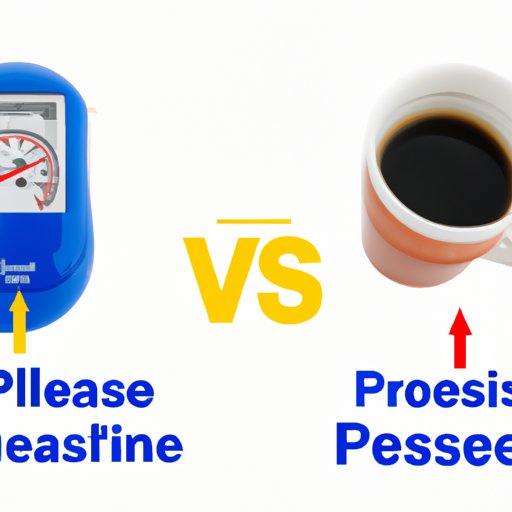
Introduction
Low blood pressure, also known as hypotension, occurs when your blood pressure drops below the normal range of 120/80 mmHg. A sudden drop in blood pressure can be dangerous, leading to dizziness, fainting, and even shock in severe cases. It’s essential to maintain healthy blood pressure levels to prevent adverse health effects.
Causes of Low Blood Pressure
There are several causes of low blood pressure:
Dehydration
When you’re dehydrated, your body loses fluids and electrolytes, leading to a drop in blood volume and blood pressure.
Blood Loss
Blood loss due to an injury or an underlying medical condition can cause a sudden drop in blood pressure.
Medication Side Effects
Certain medications such as diuretics, beta-blockers, and alpha-blockers can cause low blood pressure as a side effect.
Changes in Body Position
Standing up quickly or sitting for extended periods can cause blood to pool in your legs, leading to a sudden drop in blood pressure.
Immediate Solutions to Increase Blood Pressure in an Emergency
If you’re experiencing a sudden drop in blood pressure, here are some immediate solutions you can try:
Drink a Glass of Water
Dehydration is a common cause of low blood pressure. Drinking water can help increase blood volume and blood pressure.
Try to drink at least 8-10 glasses of water a day, and if you’re experiencing low blood pressure, try drinking a glass of water immediately.
Use Compression Stockings
Compression stockings can help improve circulation and increase blood pressure. They work by applying pressure to your legs, helping to prevent blood from pooling in your legs and keeping blood flow up.
There are different types of compression stockings available, and you can choose one that best suits your needs.
Change Positions
Changing positions can help improve blood flow and increase blood pressure. If you’re sitting or lying down, try standing up slowly and moving around. This can help prevent blood from pooling in your legs which causes a sudden drop in blood pressure.
If you’re standing, try sitting or lying down for a while to help improve blood flow and increase blood pressure.
Eat a Salty Snack
Salt helps increase blood volume, which, in turn, increases blood pressure. Eating a salty snack such as pretzels or potato chips can help raise blood pressure quickly.
However, it’s essential to consume salty foods in moderation.
Try Deep Breathing
Deep breathing can help stimulate the relaxation response in your body, which can help reduce stress and increase blood pressure. Try taking deep breaths, inhaling through your nose, and exhaling through your mouth.
You can also try other breathing techniques, such as pursed-lip breathing, which can help increase blood pressure quickly.
Drink Caffeine
Caffeine can temporarily raise blood pressure by stimulating the nervous system and causing blood vessels to narrow. Try drinking coffee, tea, or other caffeinated beverages to help increase blood pressure.
However, it’s essential to consume caffeine in moderation as too much caffeine can cause adverse health effects.
Exercise
Light exercise can help increase blood flow and raise blood pressure. Try doing some simple exercises such as walking, cycling, or jogging for a few minutes to help increase blood pressure.
However, it’s essential to avoid intense exercise as it can cause a sudden drop in blood pressure.
Preventative Measures to Maintain Healthy Blood Pressure Levels
There are several preventative measures you can take to maintain healthy blood pressure levels:
Diet Changes
Eating a balanced diet rich in fruits, vegetables, whole grains, lean protein, and healthy fats can help maintain healthy blood pressure levels. It’s essential to avoid foods that are high in salt, sugar, and saturated fats.
Exercise Routine
Regular exercise can help maintain healthy blood pressure levels. It’s recommended to aim for at least 150 minutes of moderate-intensity exercise per week.
It’s essential to choose exercises that you enjoy and can do safely.
Stress Management Techniques
Stress can cause a sudden rise in blood pressure and increase the risk of developing high blood pressure in the long term. It’s important to manage stress through techniques such as meditation, deep breathing, and yoga.
Conclusion
If you’re experiencing a sudden drop in blood pressure, you can try several immediate solutions such as drinking a glass of water, using compression stockings, changing positions, eating a salty snack, trying deep breathing, drinking caffeine, and light exercise. However, it’s essential to maintain healthy blood pressure levels through preventative measures such as a balanced diet, regular exercise, and stress management techniques.
If you’re experiencing consistent low blood pressure, it’s important to seek medical attention.





